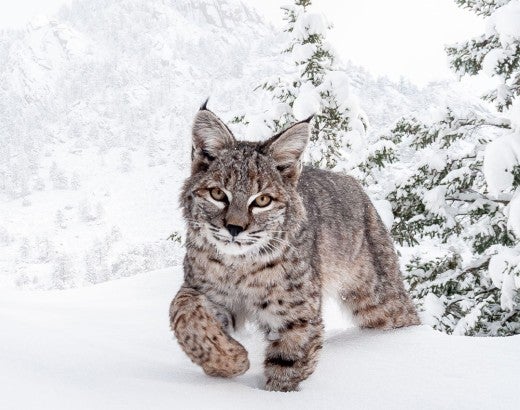But just because they keep to themselves doesn’t mean bobcats are safe from human exploitation. Trophy hunters kill them for bragging rights and trappers pursue them for their pelts. Some states allow horrific killing methods—including steel-jaw leghold traps and hounding with packs of dogs. In places where these native cats are protected, trappers and others regularly seek to remove those protections.

In recent years, investigators with the Humane Society of the United States have uncovered numerous instances of popular retail stores selling fur-trimmed garments that were incorrectly (and illegally) labeled as “faux.” Make sure your fashion purchases don’t inadvertently reward animal cruelty by using our humane shopping guide to distinguish fur from faux.

With a range that stretches from southern Canada to central Mexico, bobcats can be found in nearly every region of the continental U.S. Not much bigger than a large house cat, bobcats don’t pose a public safety threat, but may show up in suburban areas as they lose natural habitat.

For every animal saved, countless others are still suffering. By stepping up for them, you can create a future where animals no longer have to suffer in puppy mills, factory farms, testing labs or other heartbreaking situations. Start saving lives today!

